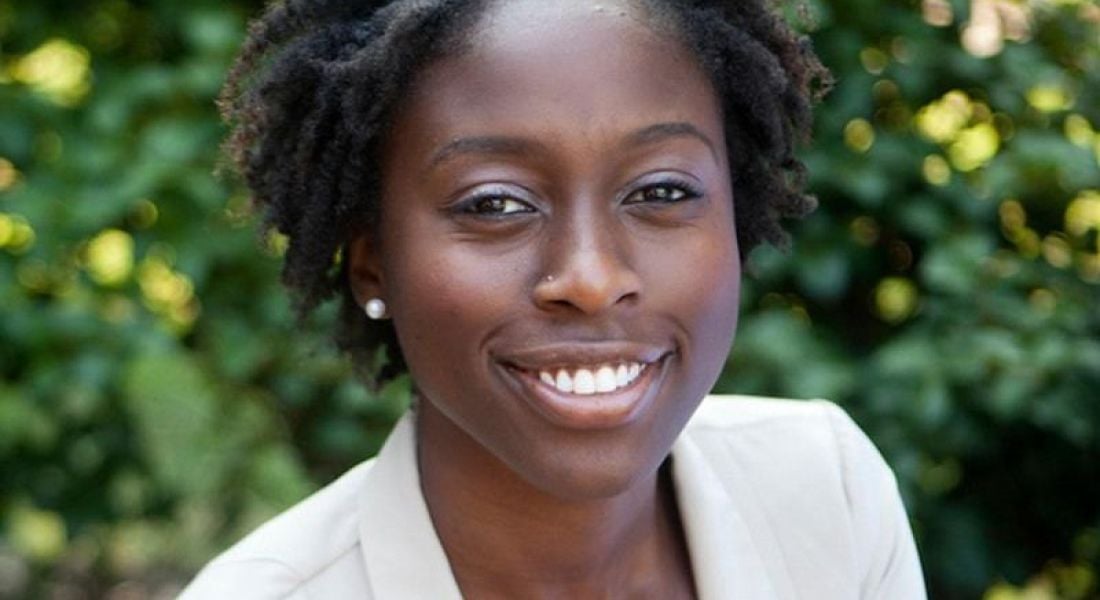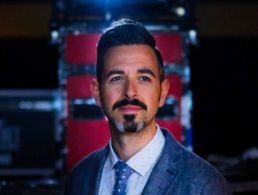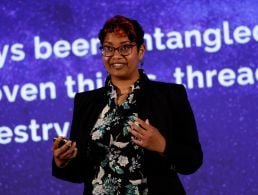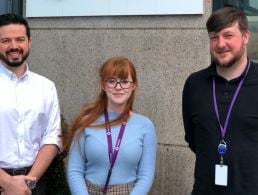Jamie Adasi, director of diversity, equity and inclusion at Greenhouse, spoke at Future Human 2020 about building fairer workplaces and making sure there are more voices at the table.
While more and more companies are recognising the importance of diversity, it’s crucial that equity and inclusion aren’t left behind. This is a prominent issue that Jamie Adasi is determined to fix.
Adasi is director of diversity, equity and inclusion at recruitment software provider Greenhouse. Though roles like hers are becoming more common in workplaces around the world, Adasi is particularly passionate about keeping equity and inclusion in the diversity equation.
Speaking to Siliconrepublic.com editor Elaine Burke at Future Human 2020, Adasi explained that she sees equity as a “root-cause analysis”.
“So really being able to look at things like discrimination, harassment, who’s getting promoted in the pipeline,” she said. “And with inclusion, I see inclusion specifically as who’s missing from the table? But not only that, was a table built for them in the first place?
“And if not, is there room for us to kind of renegotiate the space, to kind of have more voices at the table? And not only just do that, but also to help us have better business outcomes overall.”
Frameworks for fairer workplaces
For the companies that don’t have a dedicated leadership role for diversity and inclusion, Adasi recommended some frameworks that can help.
One is Deloitte’s six traits of inclusive leadership. “That framework really just helps people to kind of get a grasp and understanding on some of the softer skills, things like visible commitments, empathy, etc that people want to see in a leader when it comes to diversity, equity and inclusion.
“If you can at least get someone in the C-suite or VP level involved in some of those conversations, that can really help to move that conversation forward pretty quickly.”
‘A lot of people feel like they have to let go of something to be able to provide the space for diversity, equity and inclusion work’
– JAMIE ADASI
Another is Dr Robert Livingston’s PRESS framework for racial equity. “He talks about five constructs under PRESS. So, P being for problem awareness,” Adasi explained.
“There’s a lot of studies that show that specifically here in the US, for example, there might be some folks who are white who might think that over the last 50 years or so, anti-black racism has actually been decreasing, whereas something like, you know, what we call anti-white racism – which really is an impossibility here in the US – is actually increasing.
“And so if we just look at the actual problem itself, if we don’t understand that part first, I think it’s really hard for organisations to then move forward into actually doing anything about it, right? If I don’t think there’s a problem in the first place, that’s [a problem].”
Adasi went on to explain the idea behind the final S in the PRESS framework, which stands for sacrifice, but which she prefers to think of as investment. “That is really this idea that a lot of people feel like they have to let go of something to be able to provide the space for diversity, equity and inclusion work.
“In reality though, if you think you have to sacrifice high-quality standards to get someone in, it’s kind of a bit insulting, right? And so I think it’s really reworking that to what are the time, resources and effort we want to give into the space?
“How are we going to make sure that this is adequately staffed long-term, or that we have the adequate resources to get a consultant or a trainer in to be able to actually move forward on that work?”
Now is the time to reflect
Through her studies and her career to date, Adasi has experience in psychology training and counselling. Her passion for equity lives alongside her awareness for mental health and mindfulness, she said.
Something she has noticed during the pandemic has been the anxiety and depression that many workers are experiencing. This has sometimes been higher for people still working than for those who have lost their jobs, she said, as financial and other insecurities run high.
“People can’t really ignore what’s happening in their lives outside and just come to work and then be a robot all day, right?” she said, adding that now is a good time for businesses to pause and reflect their approaches to diversity.
Companies should ask themselves: “Have we had a good strategy that’s been working? Have we not? If you’ve had some time to do some hiring freezes, for example, have you set some new diversity, equity and inclusion goals that really feel tangible?
“At the end of the day I think goals are all great, tactics around recruiting are really important as well, but if we don’t have any behavioural changes and those really important impacts on diversity – things like hiring, promotion, who gets sponsored in organisations, who’s mentored – if we don’t have those folks who are in leadership actually have behavioural changes around biases, then we won’t really see a lot of progression.”
Taking the opportunities from challenges
Covid-19 has been a huge disrupter for all kinds of workplaces this year, but so has the racial injustice that led to a resurgence in the Black Lives Matter movement. While the impacts of these have been devastating to say the least, Adasi believes that businesses can work together to learn from them.
“I think it’s an important time to involve people who are really interested in diversity work,” she said. “You don’t have to be an expert; you can have someone across the organisation who just wants to raise their hand to help out.”
At Greenhouse, employees have been encouraged to discuss topics such as policy brutality against black people and the disproportionate impacts of Covid-19 on disadvantaged communities.
“I’ve been able to train 20 facilitators across the organisation,” Adasi said. “Some of them have had past diversity experience, some of them are just interested in helping and they want that leadership experience.
“So to be able to bring those folks together to have these kind of cultivated, really structured conversations and to really help the organisation honestly heal together has been such a beautiful opportunity.”




